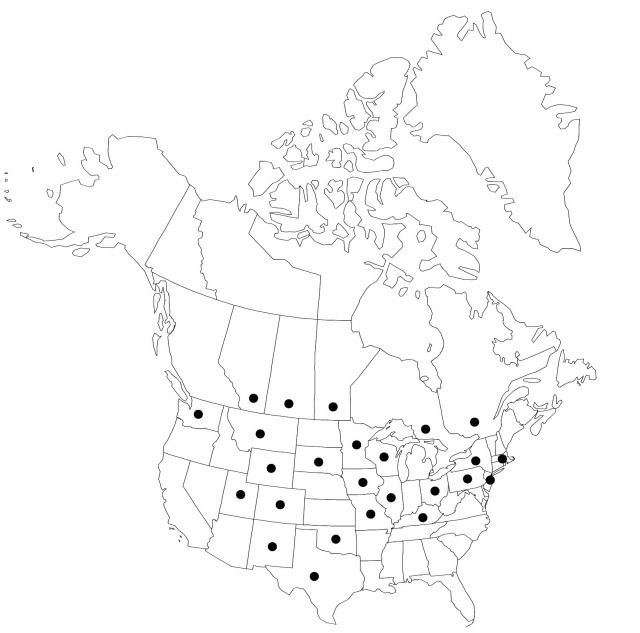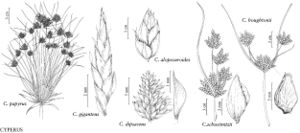Difference between revisions of "Cyperus schweinitzii"
Ann. Lyceum Nat. Hist. New York 3: 276. 1836.
FNA>Volume Importer |
FNA>Volume Importer |
(No difference)
| |
Revision as of 21:07, 16 December 2019
Herbs, perennial, rhizomatous. Culms trigonous, (10–)20–50 cm × (0.6–)1–2 mm, glabrous or more often scabridulous, either in distal 1/2 or over entire length; basal sheaths, 1–3, light brown, 1–4 cm, papery. Leaves flat to V-shaped, (2–)20–35 cm × 2–6 mm, margins and keel minutely scabridulous; proximal leaves bladeless. Inflorescences: spikes ± umbellate to slenderly (infrequently broadly) ovoid, 10–25 × 7–16 mm; rays 3–5, 1.5–8(–15) cm; bracts 3–7, erect (or declined at most 25–30° from vertical), (2.5–)8–20(–25) cm × (0.5–)1.5–6 mm; rachilla ± deciduous, wingless. Spikelets (1–)5–10(–20), oblong to linear-oblong, quadrangular, 7–10(–18) × (2.8–)3.2–4(–4.5) mm; floral scales deciduous, (1–)5–10(–14), spreading, laterally stramineous or dull whitish, sometimes also red-spotted, medially green, laterally 2–3-ribbed, medially 3-ribbed, broadly ovate to oblong-ovate, (2.3–)2.8–3.2 × (2–)2.4–3.2 mm, apex broadly rounded, often clear-erose, cusp 0.1–0.4 mm in proximal scales, 0.3–1 mm in distal scales. Flowers: anthers 0.8–1.4 mm; styles 0.1–0.3 mm; stigmas 1.5–3 mm. Achenes light to dark brown or nearly black, broadly ellipsoid, infrequently obovoid, 2–2.4 × 0.9–1.4 mm, base cuneate to ± stipelike, apex obtuse to broadly rounded, surfaces papillose. 2n = 166.
Phenology: Fruiting late spring–early summer.
Habitat: Riverbanks, sand bars, lakeshores, sand dunes, sandy openings in woods
Elevation: 0–1000 m
Distribution

Alta., Man., Ont., Que., Sask., Colo., Ill., Iowa, Ky., Mass., Mich., Minn., Mo., Mont., N.J., N.Mex., N.Y., Ohio, Okla., Pa., S.Dak., Tex., Utah, Wash., Wis., Wyo., Mexico (Coahuila).
Discussion
Cyperus schweinitzii is introduced, but not naturalized, in Massachusetts and Washington.
Selected References
None.
